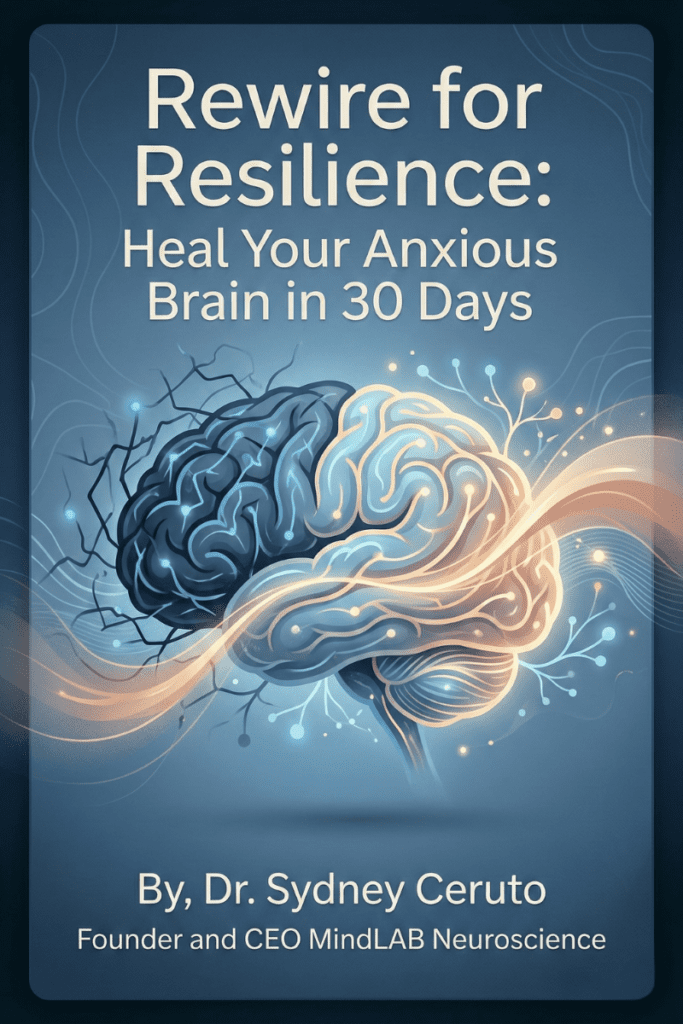The Habit Code is the hidden blueprint that governs our daily lives, shaping our behaviors, decisions, and ultimately, our success. But have you ever wondered why some habits become ingrained while others slip away? The answer lies in the fascinating realm of neuroscience, where researchers are decoding the intricate workings of our brains. By unraveling The Habit Code through cutting-edge neuroscientific insights, we can unlock powerful strategies to rewire our neural pathways. This understanding allows us to crack the code of habit formation, enabling us to create lasting positive changes in our lives. Neuroscience reveals that our brains are constantly adapting, forming new connections and strengthening existing ones. By harnessing this neuroplasticity, we can effectively rewrite The Habit Code, transforming fleeting intentions into automatic behaviors that propel us towards our goals.
The Brain’s Habit-Forming Machinery
At the core of habit formation is the basal ganglia, a group of subcortical structures deep within our brains. This region plays a crucial role in learning, motor control, and, most importantly for our discussion, habit formation. When we repeat a behavior, the basal ganglia create neural pathways that become stronger with each repetition. This process, known as neuroplasticity, allows our brains to adapt and change over time.
The Habit Loop
Habits follow a predictable pattern, often referred to as the “habit loop.” This loop consists of three main components:
- Cue: The trigger that initiates the behavior
- Routine: The behavior itself
- Reward: The positive reinforcement that follows the behavior
Understanding this loop is crucial for building new habits and breaking old ones. By identifying and manipulating these components, we can create an environment conducive to positive habit formation.
Neuroplasticity: Your Brain’s Superpower
Neuroplasticity is the brain’s ability to reorganize itself by forming new neural connections throughout life. This remarkable feature allows us to learn, adapt, and change our behaviors. When it comes to building habits, neuroplasticity is our greatest ally.Harnessing Neuroplasticity for Habit FormationTo leverage neuroplasticity in habit building:
- Consistency is key: Regular repetition strengthens neural pathways.
- Focus on small wins: Celebrate minor successes to reinforce positive behaviors.
- Visualize success: Mental rehearsal can activate similar neural pathways as physical practice.
By consistently engaging in desired behaviors and visualizing success, we can strengthen the neural connections associated with those habits, making them more automatic over time.
The Role of Dopamine in Habit Formation
Dopamine, often called the “feel-good” neurotransmitter, plays a crucial role in habit formation. When we engage in rewarding behaviors, our brains release dopamine, creating a positive association with that action. This reinforcement makes us more likely to repeat the behavior in the future.Leveraging Dopamine for Positive HabitsTo harness the power of dopamine:
- Create immediate rewards: Link desired behaviors with small, instant gratifications.
- Use positive reinforcement: Celebrate progress and milestones along your habit-building journey.
- Find intrinsic motivation: Connect habits to personal values and long-term goals.
By associating positive emotions and rewards with our desired habits, we can create a powerful motivational force that drives us towards success.

Overcoming the Habit-Building Hurdles
While understanding the neuroscience behind habits is crucial, implementing lasting change can still be challenging. Let’s explore some common obstacles and strategies to overcome them.The Plateau EffectAs we progress in our habit-building journey, we may encounter periods of stagnation or even regression. This phenomenon, known as the plateau effect, is a natural part of the learning process. Our brains become more efficient at performing the new behavior, requiring less conscious effort and resulting in a perceived slowdown of progress.To overcome the plateau effect:
- Introduce variety: Modify your routine slightly to keep your brain engaged.
- Set new challenges: Gradually increase the difficulty or complexity of your habit.
- Practice mindfulness: Stay present and focused during habit execution to maintain neural engagement.
Stress and Habit FormationStress can significantly impact our ability to form and maintain habits. When we’re stressed, the prefrontal cortex – responsible for decision-making and self-control – becomes less active, while the amygdala – associated with emotional responses – becomes more dominant. This shift can lead us to fall back on old, comfortable habits rather than sticking to new, beneficial ones.To build habits in the face of stress:
- Practice stress-reduction techniques: Incorporate meditation, deep breathing, or exercise into your routine.
- Create a supportive environment: Minimize stressors and surround yourself with positive influences.
- Use implementation intentions: Plan specific responses to potential obstacles or stressors.
The Power of Habit Stacking
Habit stacking is a powerful technique that leverages existing neural pathways to build new habits. By attaching a new habit to an established one, we can piggyback on the brain’s existing neural connections, making it easier to remember and execute the new behavior.The Science Behind Habit StackingHabit stacking works by utilizing our brain’s natural tendency to create routines. When we perform a well-established habit, our brain releases neurotransmitters like norepinephrine and dopamine. Norepinephrine helps us focus our attention and retrieve information from memory, while dopamine creates a feel-good reward sensation that motivates us to continue the behavior. By linking a new habit to an existing one, we’re essentially hijacking this neurochemical process. The established habit acts as a trigger, prompting the release of these neurotransmitters, which then helps us remember and execute the new habit we’ve stacked onto it.Benefits of Habit Stacking
- Reduces decision fatigue: By automating small decisions throughout your day, you free up mental energy for more important tasks.
- Increases consistency: Linking habits together makes it more likely that you’ll perform the new habit regularly.
- Saves time: Habit stacking allows you to accomplish multiple tasks in a streamlined routine.
- Builds momentum: Successfully completing a habit stack can create a positive domino effect, encouraging you to tackle other goals.
How to Implement Habit Stacking
- Identify an existing habit: Choose a well-established routine in your daily life, such as brushing your teeth or making your morning coffee.
- Select a new habit: Choose a small, manageable behavior you want to incorporate. Start with something that takes less than five minutes to complete.
- Create a clear link: Use specific language to connect the two habits. For example, “After I pour my morning coffee, I will meditate for 5 minutes”.
- Follow a logical process: Ensure your habit stack follows a natural sequence that makes sense for your daily routine.
- Use a checklist: Create a written checklist of your habit stack to reinforce the routine and make it easier to follow.
- Start small: Begin with just one or two new habits stacked onto existing ones. As these become automatic, you can gradually add more.
Examples of Effective Habit Stacks
- Morning routine: After making your bed, drink a glass of water and do five minutes of stretching.
- Work productivity: After checking your email, write down your top three priorities for the day.
- Evening wind-down: After brushing your teeth, read a book for 10 minutes and practice deep breathing exercises.
- Fitness boost: After putting on your running shoes, do 10 push-ups and 10 squats before heading out for your run.
Remember, consistency is key when it comes to habit stacking. By regularly performing your chosen habit stack, you’ll strengthen the neural connections associated with these behaviors, making them more automatic over time. Start small, be patient, and watch as your new habits become an effortless part of your daily routine.

The Importance of Sleep in Habit Formation
Sleep plays a crucial role in consolidating memories and strengthening neural connections. During sleep, our brains process and reinforce the information and behaviors we’ve experienced throughout the day. This makes quality sleep essential for effective habit formation.Optimizing Sleep for Habit Building
- Maintain a consistent sleep schedule: Go to bed and wake up at the same time each day.
- Create a relaxing bedtime routine: Engage in calming activities before sleep to signal your brain it’s time to rest.
- Limit screen time before bed: Blue light from devices can disrupt your sleep-wake cycle.
By prioritizing sleep, you give your brain the opportunity to strengthen the neural pathways associated with your new habits, making them more likely to stick.
Measuring Progress and Staying Motivated
As you embark on your habit-building journey, it’s essential to track your progress and maintain motivation. Remember that habit formation is a gradual process, and small, consistent steps lead to significant long-term changes.Strategies for Tracking and Motivation
- Use habit-tracking apps or journals to monitor your progress visually.
- Set realistic milestones and celebrate achievements along the way.
- Share your goals with a supportive community or accountability partner.
- Reflect on your “why” regularly to stay connected to your long-term vision.
By implementing these strategies, you can maintain momentum and overcome obstacles on your path to lasting habit formation.
Putting It All Together: Your Brain, Your Habits, Your Future
Understanding the neuroscience behind habit formation empowers us to take control of our behaviors and shape our lives intentionally. By harnessing the power of neuroplasticity, leveraging dopamine, and implementing evidence-based strategies, we can rewire our brains for success.Remember, building habits is a journey, not a destination. Be patient with yourself, celebrate small victories, and trust in the process. With consistent effort and the right approach, you can create lasting positive changes that will transform your life.Are you ready to harness the power of neuroscience and build habits that stick? Start small, stay consistent, and watch as your brain adapts and evolves, paving the way for a more successful, fulfilling future.





